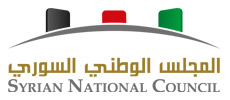Safe Area for Syria
An Assessment of Legality, Logistics and Hazards
Safe Area for Syria PDF Download
The Syrian National Council (SNC) is entering a critical phase in the Syrian revolution whereby the hope of a continued campaign of passive resistance to an exceptionally brutal and unrestrained regime is becoming more and more akin to a suicide pact. United States (U.S.) and European Union (E.U.) sanctions on Syria have indeed begun to take a serious economic toll on President Bashar al-Assad regime’s ability to finance the state apparatus of repression. They will, in the long run, seriously impact the regime’s ability to sustain its hold indefinitely over key elements of society. But sanctions have not stopped or slowed the murder, arrest, child-rape and torture of ordinary Syrians.
Ten months of peaceful protests have been met with unremitting barbarism the likes of which have not been witnessed elsewhere in the Arab Spring. More than 5,000 people have been killed, over 50,000 declared missing, another 59,000 incarcerated and upwards of 16,000 dispossessed by the Assad regime. Assad bears full culpability for the mass killings being committed daily by his paramilitary, special security, and armed forces. All orders, planning and decision making behind what the United Nations (U.N.) Human Rights Council has termed “crimes against humanity” are derived directly or indirectly from Assad and his inner circle. International efforts to weaken the regime must thus be part of strategic effort to bring Assad and his senior loyalists to justice immediately. The failure to secure a United Nations Security Council resolution that would impose comprehensive international sanctions, the lack of international consensus on enacting more robust measures to protect a vulnerable populace, the regime’s incitement of sectarian violence and its decision to launch multiple full-scale offensive military campaigns against civilians all suggest that prolonging decisive action to topple the Assad regime could very well plunge the Syrian state into a devastating and protracted conflict. Failed statehood is one outcome. A humanitarian catastrophe on par with the 1994 Rwandan genocide is another very real likelihood. In the interest of assessing all suggested options for hastening the end of a totalitarian dictatorship and/or averting a mass humanitarian catastrophe, this paper examines the way in which foreign military intervention could work for Syria. It does not advocate a policy but rather offers options while examining necessary political preconditions, legal rationales, logistics and possible hazards.
On 19 December, the SNC formally endorsed foreign military intervention for Syria, calling on the “Arab League, the United Nations, and the international community to take urgent action with regard to the protection of Syrian civilians and activists by creating safe havens and protected zones.” This represents a significant about-face from the institution’s founding National Consensus Charter, which categorically rejected such a contingency. Moreover, after initially ruling out “armed resistance,” in contrast to the Free Syrian Army (FSA), the SNC has now also “pledged to support” the FSA as a military custodian of the revolution.
These developments, while clarifying, nevertheless do not resolve two outstanding challenges that the SNC must overcome before it can make a convincing case for any form of foreign military intervention: its lack of international legitimacy as a government-in-exile, and its disunity with other oppositional elements in Syria, most notably the “independent” brigades of rebel soldiers.

